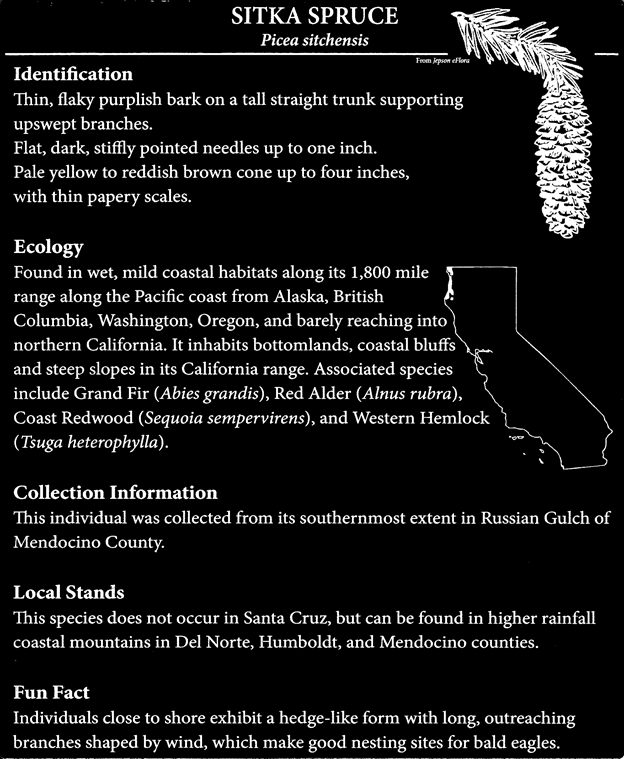
There are 52 species of conifers native to the state of California, far more than any other state or region of its size. Fourteen of those are endemic to the state, found only within the state’s borders. The world’s tallest tree, largest tree by biomass, and oldest tree are all coniferous trees found in California. There are eight species of coniferous trees native to the Santa Cruz Mountains, including Santa Cruz cypress (Hesperocyparis abramsiana), which is endemic to sandy soils and sandstone outcrops in the Santa Cruz Mountains.
Given the great diversity of conifers in California, I wanted to help educate the public about the notable trees statewide. The UCSC Arboretum and Botanic Garden hosts thousands of visitors per year who are interested in learning more about plants. The UCSC Arboretum thus provided an excellent opportunity for me to help educate the public about these trees. I curated interpretive signage for native conifers represented at the UCSC Arboretum to educate the public about the diversity of these organisms within our state, specifically those of conservation concern.

I created ten informational signs that will be installed in front of various California native conifers at the UCSC Arboretum and Botanic Garden. The signs contain information on how to identify the tree, where the individual was collected, its natural habitat and associated species, and a fun fact or two. Information on signs is intentionally accessible to those without a background in science, but include information of interest to those with existing knowledge of California plants and ecosystems as well. I created signs for well known trees such as the coast redwood (Sequoia sempervirens) and less known species such as the Santa Lucia fir (Abies bracteata) and bigcone spruce (Pseudotsuga macrocarpa) to increase awareness of the diversity of coniferous trees throughout California, many of which are endemic and of conservation concern. Interpretive signage aims to educate the public about California native conifers, increase visitation to lesser known parts of the Arboretum, and incentivize new gardens along trails and areas adjacent to selected conifers.
Among this text are images of selected interpretive signage. You can see all ten signs, plus many other interesting plants, when you visit the California Conservation Garden and Laurasian Forest of the UCSC Arboretum and Botanic Garden.
I’d like to thank those who helped in the making of this project including Brett Hall, Sam Spurlin, Karen Holl, and the Norris Center for Natural History for providing funding for signage materials.

